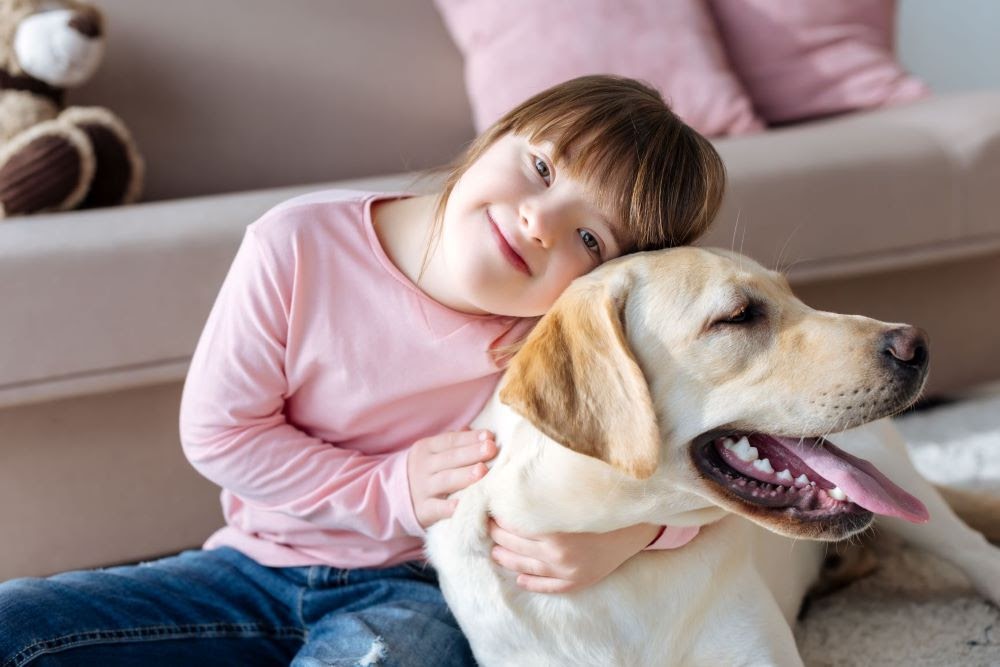
Can owning a pet teach your child about responsibility? The answer is a resounding yes! And, pet ownership provides a variety of other learning opportunities, too.
The best way to reinforce skills is through practice and repetition, and having a pet teaches your child to be responsible on a daily basis.
Of course, other household chores also have value, but caring for another living thing’s wellbeing teaches about empathy, patience, and sacrifice- skills your child simply wouldn’t learn by taking out the trash or doing the dishes.
Of course, you’ll have to accept that you are the one who’s ultimately responsible for the pet’s care. Your child will learn from your example, but it will take time, and you’ll be the one doing most of the work in the meantime.
But, if you’re willing to do the work yourself as needed, having a pet provides a multitude of opportunities to teach your child valuable skills that will help him or her grow into a reliable and productive adult.
Choose an Age-Appropriate Pet for Your Child
If you don’t already have a pet, the first step will be deciding what kind of pet to get. Be sure to choose a pet that’s appropriate for your child’s age.
For example, a very young child can’t do much to help with the care of a large dog, but he could assist with caring for a goldfish, a guinea pig, a cat, or maybe even a small dog.
Once you’ve considered your child’s skill level, get them involved in the final decision about what type of pet to get.
Consider having your child sit in on a telehealth call with a specialist. Services like Bond Vet’s online veterinarian help can provide context on what the animal’s needs will be ahead of time. Then, before you bring your new pet home, sit down together and decide which tasks your child will be responsible for.
Getting your child involved in this part of the process teaches them about making responsible decisions right from the beginning.
6 Ways Pet Ownership Teaches Responsibility and Life Skills
Not only does caring for a pet teach responsibility, but it also builds self-confidence and encourages independence. Here are six ways pet ownership teaches valuable life lessons.
-
Encourages Decision Making
Pet ownership encourages decision making, such as where the pet will sleep each night or choosing a cage for the new hamster. Decision-making is a crucial life skill that will help your child feel more in control and encourage self-esteem.
-
Teaches About Empathy, Patience, and Making Sacrifices for Others
Caring for a pet teaches children about empathy, compassion, and kindness toward others. When they give up some of their own free time to care for their pet, they learn about making sacrifices for those around them. At the same time, they get the enjoyment of the pet’s love and loyalty, which teaches them that empathy, compassion, and sacrifice sometimes come with rewards, too.
-
Teaches About Priorities and Time Management
Any pet needs care on some level, even a goldfish. Being responsible for another living thing, even when it’s inconvenient or conflicts with something else your child wants to do, helps your child learn about prioritizing needs over wants.
And, a dog must be walked and fed before school in the morning. Or, maybe the hamster’s cage needs to be cleaned out every Saturday before soccer practice. Time management is an essential skill in adulthood. Owning a pet can teach your child about scheduling and prioritizing tasks.
-
Encourages Exercise and Other Healthy Habits
Taking the dog for his daily walk, with parental supervision, teaches your child about the importance of exercise, fresh air, and sunshine. Having a pet provides opportunities to teach your child about healthy eating, grooming, hygiene, and the value of regular checkups, too.
-
Teaches Financial Responsibility
Get your child involved in making purchasing decisions for your pet. Use the opportunity to teach them about prioritizing necessities like food and veterinary care over wants like extra treats and toys.
-
Teaches About Companionship, Forming Connections, and Develops Social Skills
Having a pet gives your child a trusted companion and forming that bond can help your child form emotional connections with other people. As your child grows, this skill will help them be a better friend and companion to those around them, too.
And talking about the family pet is a great ice breaker that can get your child to open to other people. Even a simple walk with the dog can help your child develop social skills, such as when people approach the dog to say hello.
Assigning Age-Appropriate Pet Care Tasks
When assigning pet care tasks to your child, make sure they are age-appropriate. Be careful not to overwhelm the child with too many responsibilities at once. That could have a negative impact on your child’s self-esteem and even cause your child to resent the pet.
Responsibilities should grow with your child. As the responsibilities grow, so will your child’s self-confidence. Here are some examples of pet care tasks your child can do, depending on his or her age.
-
Toddlers - 5 Years Old
Little ones can help fill food and water bowls, but parents should be the ones to actually give the food to the animal. They can also help wash and put away the pet’s dishes. They can be responsible for putting away toys each night and can accompany parents on short walks. They can also assist with bathing and grooming, as long as the parents are on hand to help and supervise.
-
Ages 5 – 10
Children over five are old enough to help clean up pet areas, including litter boxes, kennels, cages, and the yard. They’re able to walk smaller dogs with supervision and play games like fetch in the backyard. At this age, they can take on more of the grooming and bathing responsibilities, as well.
-
Ages 10 & Up
Children over 10 can generally take on most of the pet’s day to day care. However, if your pet requires medication, you should take care of administering that yourself. And, if you have a larger dog, your child may not be able to walk him on their own until they’re older.
Use Positive Reinforcement to Encourage Responsibility
Don’t forget that everyone makes mistakes and your child is still learning what it means to be responsible. Remember, you are trying to teach your child valuable life lessons that will last a lifetime.
Never threaten to give away the pet if your child doesn’t take care of it. Giving the pet away teaches your child that it’s ok to give up when things get tough, and that’s the exact opposite of what you’re trying to teach.
Instead, teach your child about how their care keeps the pet healthy and happy and point out that not caring for the pet also has consequences for its health and happiness.
Use positive reinforcement to encourage your child to be responsible for your pet. Provide lots of praise and encouragement when they meet their responsibilities, especially when they do it without reminding. Make pet ownership a rewarding experience for your child, never a punishment.
Final Tip: Teach by Example
Before you bring a pet into your home, accept that you are ultimately the one who’s going to be responsible for its care. It’s your job to teach by example and ensure that your pet receives everything it needs, including daily attention and playtime.
Kids learn by imitating adults, so your child must see you taking care of and spending time with the pet. Reminding your child to take care of his pet care responsibilities is important but teaching through example and positive reinforcement will go much further over the long run.



























